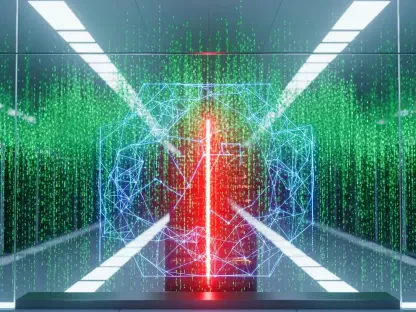I’m thrilled to sit down with Kofi Ndaikate, a renowned expert in the fast-evolving world of Fintech, with deep insights into blockchain, cryptocurrency, regulation, and policy. Today, we’re diving into the latest trends in decentralized finance (DeFi), including SharpLink Gaming’s bold move to deploy $200 million of Ether onto Linea, innovative yield strategies shaking up the industry, and the growing accessibility of onchain derivatives trading through mobile platforms like THORWallet. Our conversation explores how corporations are leveraging DeFi for better returns, the blending of centralized and decentralized finance, and the challenges and opportunities that lie ahead in this dynamic space.
How did SharpLink Gaming arrive at the decision to deploy $200 million of Ether onto Consensys’ Linea network, and what’s the primary goal behind this strategy?
SharpLink’s decision to deploy such a significant portion of its Ether treasury onto Linea is rooted in a desire to maximize the value of their holdings through DeFi. The primary goal is to tap into onchain yield opportunities that traditional financial systems can’t match. Linea, as a layer-2 solution with zkEVM technology, offers lower transaction costs and faster processing, which makes it an ideal platform for managing large-scale ETH deployments efficiently while targeting competitive returns.
What specific advantages does Linea’s zkEVM layer-2 infrastructure bring to SharpLink’s management of its ETH holdings?
Linea’s zkEVM infrastructure provides scalability and cost efficiency, which are critical for handling a $200 million deployment. It allows SharpLink to execute complex DeFi strategies like staking and restaking with minimal gas fees compared to Ethereum’s mainnet. Additionally, the zero-knowledge proofs ensure privacy and security for transactions, which is a big plus for a corporate treasury looking to balance transparency with asset protection.
Can you explain how SharpLink plans to achieve ‘highly competitive, risk-adjusted ETH-denominated returns’ through this deployment?
Absolutely. SharpLink is focusing on a multi-pronged approach that includes staking their ETH to support network security and earning rewards, as well as restaking through platforms like EigenCloud to secure additional decentralized services for extra yields. They’re also leveraging incentives from Linea and ether.fi, which amplify returns while diversifying risk across different DeFi mechanisms. It’s about layering strategies to optimize returns without overexposing their treasury.
Staking and restaking are key components of SharpLink’s yield strategy with EigenCloud. Can you walk us through how these processes work in this context?
Staking involves locking up ETH to help validate transactions on a blockchain, earning rewards in return for supporting network security. Restaking takes this a step further by allowing SharpLink to reuse their already staked ETH to secure other decentralized services, like EigenCloud’s verification systems, earning additional rewards. It’s a way to compound returns on the same asset, though it does come with added complexity and risk if those secondary services face issues.
What role do incentives from Linea and ether.fi play in SharpLink’s broader plan to generate yield?
These incentives are essentially bonuses that boost SharpLink’s overall yield. Linea might offer rewards for deploying capital to their network to encourage adoption, while ether.fi, as a liquid staking and restaking protocol, provides additional returns for participating in their ecosystem. These incentives act as a sweetener, enhancing the baseline returns from staking and restaking, and fit into SharpLink’s goal of maximizing ETH-denominated gains.
With $200 million being roughly 5.6% of SharpLink’s ETH treasury, how did they determine this specific amount for deployment?
I believe SharpLink likely conducted a thorough risk assessment to balance innovation with caution. Deploying 5.6% of their treasury allows them to test DeFi strategies on a meaningful scale without overcommitting their holdings. It’s a prudent first step, giving them room to adjust based on performance and market conditions while still maintaining the majority of their ETH in more conservative positions.
As one of the largest corporate holders of ETH, does SharpLink’s move signal a broader trend for companies with significant crypto treasuries?
Definitely. SharpLink’s deployment is a strong indicator that corporations with large crypto holdings are starting to view DeFi as a viable way to enhance returns rather than just sitting on idle assets. We’re seeing a shift where companies are becoming active participants in blockchain ecosystems, setting a precedent for others to explore similar strategies, especially as DeFi matures and offers more institutional-grade solutions.
How does Anchorage Digital Bank contribute to the security of this $200 million deployment as SharpLink’s custodian?
Anchorage Digital Bank plays a critical role by providing institutional-grade custody services. They ensure the ETH is stored securely with robust safeguards against hacks or loss, using cold storage and multi-signature protocols. Their involvement adds a layer of trust and compliance, which is essential for a deployment of this size, reassuring stakeholders that the assets are protected under stringent standards.
What’s fueling the growing trend of major ETH holders like SharpLink turning to DeFi for enhanced returns?
The trend is driven by the realization that holding large amounts of ETH passively isn’t as lucrative as it could be. DeFi offers yields that often outpace traditional finance, through mechanisms like staking, lending, and liquidity provision. As protocols become more secure and user-friendly, and as institutional tools emerge, big holders see DeFi as a way to put their capital to work while still aligning with the decentralized ethos of crypto.
How does SharpLink’s approach with Linea differ from other DeFi strategies, such as deploying ETH into protocols like Spark or Compound?
SharpLink’s focus on Linea emphasizes layer-2 scalability and specific yield mechanisms like restaking with EigenCloud, which prioritizes efficiency and niche rewards. In contrast, protocols like Spark or Compound are more about lending and borrowing markets on Ethereum’s mainnet or other layers, offering yields based on supply and demand for assets. SharpLink’s strategy is more tailored to infrastructure-level participation, while others might lean toward broader market dynamics.
With centralized exchanges like Coinbase integrating DeFi yield options, do you see this hybrid model becoming the standard in the industry?
I think it’s very likely. Centralized exchanges bring user-friendly interfaces and trust to the table, which lowers the barrier for everyday users to access DeFi yields. By integrating protocols like Morpho, they’re bridging the gap between centralized convenience and decentralized benefits. This hybrid model could dominate as it balances accessibility with the innovation of DeFi, though it might raise questions about true decentralization over time.
What are some of the potential risks or challenges users might encounter when lending stablecoins like USDC through platforms offering high yields?
High yields often come with hidden risks. Lending stablecoins on platforms like Morpho through centralized exchanges can expose users to smart contract vulnerabilities, where a bug or exploit could lead to asset loss. There’s also the risk of depegging, where a stablecoin loses its value anchor, and liquidation risks if collateral values drop. Users need to weigh these against the promised returns and ensure they understand the platform’s safeguards.
How does THORWallet’s integration with dYdX change the game for retail users interested in perpetual futures trading?
THORWallet’s integration with dYdX is a game-changer because it brings sophisticated perpetual futures trading to a mobile, self-custodial environment. Retail users no longer need to rely on desktops or centralized platforms that hold their funds. With crosschain support, they can deposit assets directly and trade seamlessly, maintaining control over their assets while accessing tools previously out of reach for many everyday traders.
What do you foresee for the future of mobile-first DeFi solutions like THORWallet in expanding access to complex crypto trading tools?
I’m optimistic that mobile-first DeFi solutions will significantly democratize access to complex trading tools. As smartphones remain the primary internet access point for millions, platforms like THORWallet can break down barriers of technical complexity and location. My forecast is that we’ll see an explosion of user-friendly, secure mobile DeFi apps over the next few years, bringing advanced financial products to a global audience and further blurring the lines between traditional and decentralized finance.









